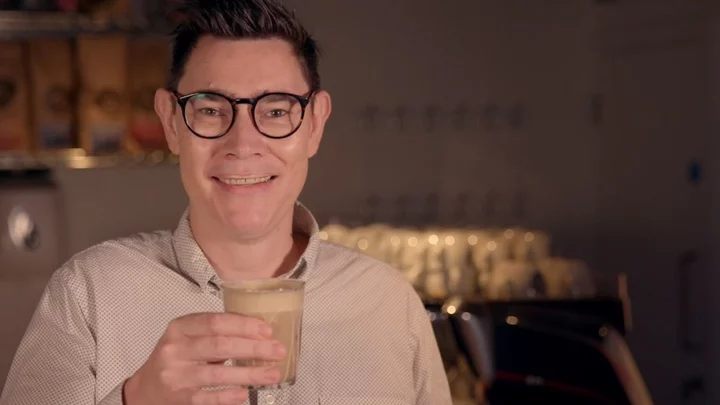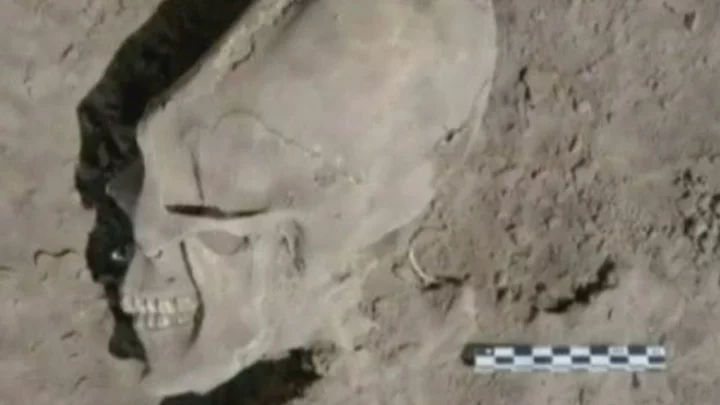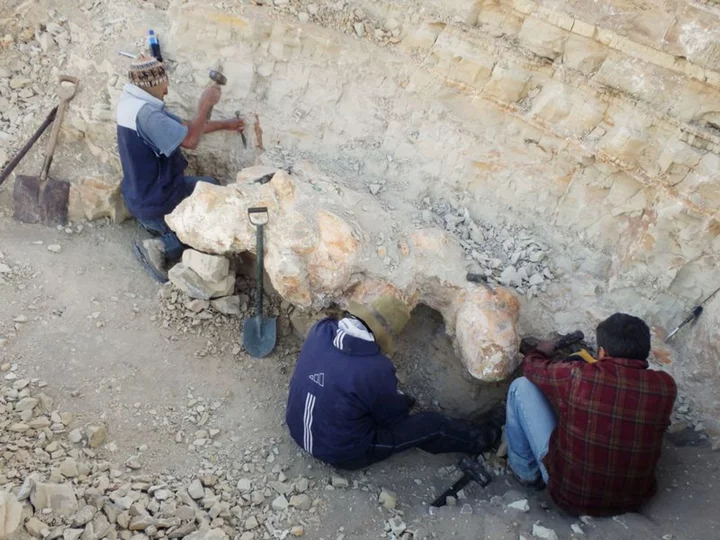
Musk Told Pentagon He Spoke to Putin Directly, New Yorker Says
Elon Musk told Pentagon officials during a call about the satellite-based internet that SpaceX supplies to Ukraine’s military
2023-08-22 01:45

Why you should delay your first coffee of the morning
For a lot of people, coffee is one of the few things that gets them out of bed and out the door in the mornings. But while it’s tempting to whack the kettle on first thing, a health expert has stated that delaying our first coffee of the day could be much more beneficial to our health. Nutritionist Gabi from The Fast 800 urged people to wait at least 90 minutes before getting their first coffee hit [via the Mirror]. Gabi claims that we can all boost energy levels by doing so. In fact, eating on an empty stomach could even cause your body to enter stress mode and release hormones like adrenaline and cortisol. "Supporting your morning coffee routine with some smart practices can be a game changer for your overall well-being,” Gabi said. She recommends drinking water, as well as eating a meal packed with fibre and protein to balance sugar levels. “Elevated blood sugar can trigger inflammation and set us up to be on a blood sugar roller coaster for the rest of the day, thereby tanking our energy supply,” the health guru said. "Within the first hour of waking, our cortisol levels ideally acutely rise and fall in a response known as our cortisol awakening response. This rise and fall of cortisol represents a healthy nervous system and actually has a big influence on our immune health and even the risk of autoimmune development." She also states that delaying coffee for a minimum of 90 minutes promotes high energy levels. Gabi said: "Morning light exposure is a huge regulator of circadian rhythm and light exposure triggers the healthy release of cortisol in the morning to support the body’s natural rhythm. Getting natural light exposure within the first hour or so of waking is a great way to support optimal hormone balance." It comes after it was revealed that the drink also gives us an extra ‘special boost’ as well as just a caffeine hit. Scientists have claimed that the act of drinking a cup of joe gives the body a lift, making us more alert, which can’t be replicated merely with caffeine. Sign up for our free Indy100 weekly newsletter Have your say in our news democracy. Click the upvote icon at the top of the page to help raise this article through the indy100 rankings.
2023-08-21 17:18

Study finds popular accessory actually likely makes ‘no difference’ to sleep quality or eye health
Special glasses marketed to filter out blue light likely do not make any difference to sleep quality or eye strain from computer use, according to a new review of studies. Blue-light blocking spectacles have been increasingly recommended, often by optometrists, since the early 2000s. Eye patients are frequently prescribed these lenses in many parts of the world with a range of marketing claims existing about their potential benefits. Some of these claims include that the special glasses may reduce eye strain associated with digital device use, improve sleep quality, and also protect the retina from light-induced damage. However, researchers, including those from the University of Melbourne in Australia, say there is “substantial debate” about whether blue-light filtering spectacle lenses have merit in ophthalmic practice. The research, published in the journal Cochrane Database of Systematic Reviews, assessed data from 17 clinical trials on the benefits offered by these glasses for improving visual performance, providing protection to the retina, and improving sleep quality. The review assessed data from individual studies from six countries, each including five to 156 participants, and the period of time over which the lenses were assessed ranging from less than one day to five weeks. Researchers found that there may be “no short-term advantages” with using blue-light filtering spectacle lenses to reduce visual fatigue associated with computer use, compared to non-blue-light filtering lenses. They say it is also currently unclear whether these lenses affect vision quality or sleep-related outcomes. The research review could also draw no conclusions about any potential effects on retinal health in the longer term. “People should be aware of these findings when deciding whether to purchase these spectacles,” study co-author Laura Downie said. “Our findings do not support the prescription of blue-light filtering lenses to the general population. These results are relevant to a broad range of stakeholders, including eye care professionals, patients, researchers and the broader community,” Dr Downie added. However, scientists said the quality and duration of the individual studies part of the review also needs to be considered. “High-quality, large clinical research studies with longer follow-up in more diverse populations are still required to ascertain more clearly the potential effects of blue-light filtering spectacle lenses on visual performance, sleep and eye health,” Sumeer Singh, another author of the study, said. The potential mechanisms by which these lenses might help with eye strain, sleep, and protecting the retina are also unclear, scientists say. “The amount of blue light our eyes receive from artificial sources, such as computer screens, is about a thousandth of what we get from natural daylight,” Dr Singh said. “Filtering out higher levels of blue light would require the lenses to have an obvious amber tint, which would have a substantial effect on colour perception,” he added. But the new research did not find any consistent reports of adverse side effects from using blue-light filtering lenses. Read More A bed bugs epidemic is sweeping the UK – this is why AI can predict Parkinson’s subtype with up to 95% accuracy, study suggests The return of schedules: How parents can make the most of back-to-school energy
2023-08-18 14:27

Experts have pinpointed exactly when society will collapse
A prediction about when society is most likely to collapse, made by scientists in the 1970s, has resurfaced – and it looks pretty bleak. Scientists at the Massachusetts Institute of Technology (MIT) used a computer to model patterns like population, natural resources and energy usage. The study, published by Club of Rome, picked out when these factors could hit “limits to growth”, which they said could lead to the downfall of modern life as we know it. They think we’ve got fewer than two decades left, with collapse due in 2040. Gulp. Sign up to our free Indy100 weekly newsletter At the time, the report wasn’t given much credence. But a similar study was carried out in 2009, and came up with similar results. Published by American Scientist, the more recent study found that the model’s results were “almost exactly on course”. "It is important to recognise that its predictions have not been invalidated and in fact seem quite on target. We are not aware of any model made by economists that is as accurate over such a long time span," the study said. And to make matters worse, Dutch sustainability researcher Gaya Herrington concurred with the prediction in 2021. Speaking to The Guardian, Herrington said: “From a research perspective, I felt a data check of a decades-old model against empirical observations would be an interesting exercise.” Herrington found that data aligned with the predictions made back in 1972, which had a worse case scenario of economic growth coming to halt at the end of this decade, and collapse around 10 years later. Thankfully, there was a reason to be cheerful too. She added: “The key finding of my study is that we still have a choice to align with a scenario that does not end in collapse. "With innovation in business, along with new developments by governments and civil society, continuing to update the model provides another perspective on the challenges and opportunities we have to create a more sustainable world.” Have your say in our news democracy. Click the upvote icon at the top of the page to help raise this article through the indy100 rankings.
2023-08-14 19:19

Never before seen ecosystem discovered thriving beneath ocean floor
Deep underground within the Pacific ocean, scientists have made a surprising discovery, which could significantly expand our understanding of marine life. Researchers found an entirely new ecosystem when turning over volcanic crust with the aid of an underwater robot, showing that even now, nature has many more secrets to unearth. The Schmidt Ocean Institute led an expedition with a team of international researchers to investigate a known site in the Pacific, according to Science Alert. Sign up to our free Indy100 weekly newsletter Subsurface fluids were found coursing beneath the ground, while scientists also found an ecosystem of worms, snails and chemosynthetic bacteria. The institute’s executive director, Jyotika Virmani, said: “This truly remarkable discovery of a new ecosystem, hidden beneath another ecosystem, provides fresh evidence that life exists in incredible places.” The new life was found beneath hydrothermal vents, which were first discovered in the 1970s spewing hot fluids loaded with minerals. They were in such a deep, dark location that scientists assumed there would be no life. Ecologist Monika Bright from the University of Vienna said: “Vent animals above and below the surface thrive together in unison, depending on vent fluid from below and oxygen in the seawater from above.” Scientists found tubeworms swimming through volcanic fluids, which makes it easier for them to get around and find new locations. The discovery came on the coast of central America, using a remote-controlled robot 2,500 metres below sea level. Wendy Schmidt, president of the Schmidt Ocean Institute, said: “The discovery of new creatures, landscapes, and now, an entirely new ecosystem underscores just how much we have yet to discover about our Ocean – and how important it is to protect what we don’t yet know or understand.” Have your say in our news democracy. Click the upvote icon at the top of the page to help raise this article through the indy100 rankings.
2023-08-11 00:26

Singapore Exchange revises IPO rules for life science firms
SINGAPORE Singapore Exchange Ltd (SGX) is amending its initial public offering (IPO) rules to clarify that life science
2023-08-10 18:49

Superconductor Stocks Drop in Korea Amid Doubts on Breakthrough
South Korean stocks that had skyrocketed on perceived links to superconductors fell for a second day Wednesday after
2023-08-09 10:54

Amazon Swaps Rockets for First Kuiper Satellite Launch
Amazon.com Inc. said it plans to launch the first two test satellites for its Project Kuiper constellation this
2023-08-08 02:53

Scientists discover skull that has never been seen before
Scientists have discovered an ancient skull in China, like no other they've seen before. The 300,000-year-old child skull was first discovered in Hualongdong back in 2019 alongside other fossil remains. The Chinese Academy of Sciences (CAS) have struggled to match them to a known lineage. The discovery left researchers baffled as it did not resemble Neanderthals or Denisovans, according to Science Alert. It led them to believe we are either missing a branch from the human family tree or need to add to it. While the skull had similarities to early modern humans, there is a lack of chin and was likened to an extinct species of human in Asia known as a Denisovan. This shape has "never been recorded in late Middle Pleistocene hominin fossil assemblages in East Asia," scientists said in a recent analysis. They believe the remains, known in the science world as HDL 6, could possibly be a combination of modern human and unknown hominin that existed in China, according to the outlet. Sign up for our free Indy100 weekly newsletter In other scientific news, archaeologists are too afraid to open the tomb of Qin Shu Huang, who ruled from 221 BC to 210 BC. The tomb is guarded by a terracotta army of soldiers and horses and was found by farmers back in 1974 in the Shaanxi province of China. Not only do archaeologists believe it will cause damage, but there are rumours of deathly booby traps that could kill curious intruders, according to IFL Science. Writings by Chinese historian Sima Qian 100 years after Qin Shu Huang's death claim "Palaces and scenic towers for a hundred officials were constructed and the tomb was filled with rare artifacts and wonderful treasure." He continued: "Craftsmen were ordered to make crossbows and arrows primed to shoot at anyone who enters the tomb. Mercury was used to simulate the hundred rivers, the Yangtze and Yellow River, and the great sea, and set to flow mechanically." Have your say in our news democracy. Click the upvote icon at the top of the page to help raise this article through the indy100 rankings.
2023-08-08 00:23

Musk Says He May Need Surgery, Will Get MRI on Back and Neck
Elon Musk said he will receive an MRI of his neck and upper back tomorrow and may require
2023-08-07 11:22

Ancient whale from Peru may be most massive animal ever on Earth
By Will Dunham Move over, blue whale. There is a new contender for the most massive animal in
2023-08-02 23:15

Mysterious galaxy resembling a giant ‘question mark’ discovered by Webb telescope
Nasa’s James Webb telescope’s most recent image of a distant star system has thrown up more questions than answers – literally. The image is of the star system Herbig Haro 46/47, and includes a cosmic object that is shaped like an actual question mark. Scientists think the entity could be a distant galaxy, or two galaxies interacting with one another. One larger galaxy could be distorting the cosmic cloud and gas of the other, for example, forming a shape similar to a question mark. Sign up to our free Indy100 weekly newsletter The red colour of the unusually shaped object in the image suggests it is more distant than the other stars in the picture. “This may be the first time we’ve seen this particular object. Additional follow-up would be required to figure out what it is with any certainty. Webb is showing us many new, distant galaxies – so there’s a lot of new science to be done,” the US’s Space Telescope Science Institute, which manages Webb’s science operations, told Space.com. The star system in the foreground, dubbed Herbig-Haro 46/47, was captured by the Webb telescope’s powerful infrared cameras and consists of two young stars pulled to each other by gravity as they spin. An image reveals the stars as buried deeply, appearing as an orange-white splotch, surrounded by a disk of gas and dust that continued to add to their mass. JWST Finds a Cosmic Question Mark and a Starry Fountain www.youtube.com “Herbig-Haro 46/47 is an important object to study because it is relatively young – only a few thousand years old,” Nasa said in a statement. The pair of actively forming stars have two-sided orange lobes which were created by earlier ejections from these stars. Scientists said the two young stars could give more insight into how stars gather mass over time, given the fact that the process usually takes millions of years. Have your say in our news democracy. Click the upvote icon at the top of the page to help raise this article through the indy100 rankings.
2023-08-02 22:21
